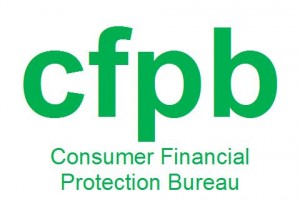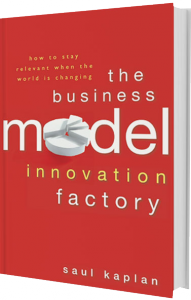 Jeff Smith spent a year in prison. But what he discovered inside wasn’t what he expected — he saw in his fellow inmates boundless ingenuity and business savvy. He asks: Why don’t we tap this entrepreneurial potential to help ex-prisoners contribute to society once they’re back outside? (From the TED Talent Search event TED@NewYork.)
Jeff Smith spent a year in prison. But what he discovered inside wasn’t what he expected — he saw in his fellow inmates boundless ingenuity and business savvy. He asks: Why don’t we tap this entrepreneurial potential to help ex-prisoners contribute to society once they’re back outside? (From the TED Talent Search event TED@NewYork.)
|
As we near our fiscal cliff deadline, No Labels co-founders Mark Mckinnon and William Gallston are issuing a new list of principles the House speaker and the President should consider when discussing our nation’s most pressing problem. As they note, in a Daily Beast column entitled, “With the Fiscal Cliff Looming, It’s Time to Take Politics Off the Table,” Americans are ready for “a rebirth of leadership” in Washington, one that puts an end to the partisan bickering and includes a steadfast commitment to problem-solving. Write McKinnon and Gallston: “Only once in the past four years have Democrats and Republicans made significant progress toward an agreement—when President Obama and House Speaker Boehner met behind closed doors, with everything on the table.” That’s a lot of talk for very little progress. That’s why on January 14, 2013, at the Marriott Marquis in New York, NY, No Labels will host a meeting titled, “Meeting to Make America Work,” to discuss how we can move forward on problem solving in Washington. At the meeting, No Labels will unveil two national leaders – one Republican, one Democrat – who will help guide the movement in 2013 and the organization will introduce a group of congressional Members who have signed on as members of the “Problem Solvers Bloc” in Congress. To RSVP to the January meeting, please send an email to January14@NEWPARTNERS.COM. For more information about the meeting visit http://meetforamerica.com/. No Labels supports a range of common-sense proposals designed to reinvigorate problem-solving in Washington. Among them include the set of principles highlighted in today’s Daily Beast column:
Tonight was to be that night. Sort of, anyway. As we were finishing dinner, I furtively slipped by the cashier and asked how much our table’s dinner would be because I “may” be picking up the check. The cashier pointed to a much higher figure than I had imagined and explained that a 15 % gratuity was automatically added since there were over 7 of us. I told her I would not be picking up the check this time after all but maybe would buy dessert for the table. The dessert menu was described to the table and no one ordered anything. Hmmmm. Now what ? And like a brilliant thunderbolt crashing through my brain, I suddenly had an ingenious and novel idea! I went back to the cashier and said, “Look, how about I pay for 25% of the bill? Can you work that out for me?”
“Well,” I said, “Just take 25% off the top and charge everyone else only 75% of their meal.” I looked at her incredulously like this is something that is requested all the time in large groups where the big shot is also fiscally prudent. A few minutes later she came by the time and whispered in my ear, “Does that 25% off the top include the tip?” “Yes,” I said. “Look, just charge me one-quarter of the total price and divide up the remainder evenly–including the tip.” At this point the person next to me said , “Just give me the check. I’ll cover it.” I insisted I pay 25% and a small big shot verbal scuffle over the bill ensued. “Oh, are you serious about getting 25% of the tab? I thought you were joking.” “I am completely serious,” I exclaimed, hoping someone else at the table would notice. “Why don’t you pick up the remainder, whatever that is, like….oh, 75%?” And he did. I announced to the table that although I wasn’t picking up the entire tab (because it was too expensive) that I I was covering 25% –which was worth noting. And added that I was glad one person who was supposed to attend had cancelled. “That’s 25% of one meal I didn’t have to cover.” I then added I would be picking up 10% of a meal this summer and up to 20% of a meal in the fall so that I would incrementally pick up 100% of one of our group dinners…but was going to stretch it out over an 18 month period of time. But as we shook hands and said goodbye until next month’s dinner everyone was thanking my friend for dinner and not giving me an honorable mention but instead a quizzical or bemused look when I explained again how we had divided things up. Finally, with the last friend to say goodnight I simplified it by explaining the situation more concretely. “You know those au gratin potatoes you had tonight? Well, I paid for them. The entree, drink, and salad was picked up by someone else. So just thank me for the au gratin potatoes.” And that was that. I spent more than I had planned to appear to be a big shot and looked cheaper than ever. But learned a valuable lesson. When trying to impress by offering to pay for dinner it never works to try to do it a la carte. It’s an all or nothing proposition. Like most things in life. Newt says that he is not ruling out another presidential run. Smart move. By dangling the prospect of a 2016 candidacy, Newt can charge higher fees as an…historian. [Naples News] (This link is not an Onion article.) The nuclear industry measures how long a radioactive material will retain its potency by its half-life — the time it takes for the material to lose half of its radioactivity. The half-life of Uranium-235 is 700 million years, for example. During the industrial era the half-life of a business model was typically measured in generations. Once the basic rules for how a company creates, delivers, and captures value were established, they became etched in stone, fortified by functional silos and sustained by reinforcing company cultures.Those days are over. The industrial era is not coming back. The half-life of a business model is declining. Today’s leaders are either going to learn how to change their business models while pedaling the bicycle of the current one or they are going to be “netflixed.” If netflix isn’t a verb it should be. net-flix
Read the rest of… There are no ties weaker than the ones that bind politicians. So, no major surprise that surrogates who were just trumpeting Mitt Romney’s election as essential to the country’s future and celebrating his record as ideally suited to cracking open the partisan gridlock are doing their share of distancing from the defeated candidate. They have a lot to distance from: ranging from internal polling that was so off base it wasted the ticket’s precious time with last-minute campaigning in states they did not come close to winning, to Romney’s characterization of the Democratic base as tools whose affection was bought off by “gifts”. But a cautionary note: Romney’s frustrations are the musing of a candidate legitimately perplexed by the Democrats’ ability to hold together a base that should have been frayed by the economic deterioration of the last four years. And if Republicans are being brutal but right about the politics of dismissing Romney, they are wrong if they ignore the question he was stabbing at: exactly how does a political majority keep intact when so many of its underlying policies aren’t exactly working in the interests of the coalition inside that majority? And if a flailing economy was not enough to weaken that base, what does that mean for the future given the unmistakable shifts in the national demographic? Case in point: the African American solidarity behind Barack Obama in the face of severe black unemployment and poverty, and at the same time that Obama has aligned himself with a gay rights movement that is disdained by a consistent 30 to 40 percent of the black voter community. Another example is the 70 plus percent support Obama amassed from a Latino community that barely yielded him 50 percent approval ratings for much of 2011 and that was openly critical of his failure to push, much less pull off, comprehensive immigration reform. And for good measure throw in Obama’s sixty percent with voters 18-29 and more improbably, his ability to sustain their participation at 2008 levels despite months of polling evidence that the poor job market for young adults would diminish their enthusiasm. Arguably, (and amusingly given the backlash from inside the party) Romney’s observations were only a clumsily put version of what numerous Republican commentators have said in a more sanitized way—that Democrats have nursed an entitlement culture that promises an engaged, assertive government to a variety of groups who are facing the imperfections of the free market. (Conservatives who argue that a softening of the GOP’s hard-line on immigration will be outweighed by Democratic pledges of more government benefits for Hispanics are channeling Romney). There is something to this assessment in its most reductionist form: between a health care law that has, for all its other imperfections, insured more young adults and low income minorities, to an executive order that eases off on the deportation of young undocumented immigrants, to a student loan reform that has cut the borrowing obligations of recent college undergraduates, the Obama administration has built a portfolio that delivered results for elements of its base that might have drifted.
Republicans who marvel at the loyalty of the 08 Obama coalition fail to appreciate that the coalition was and remains socially aspirational rather than economic. Its foundation is a yearning for a culture that is stripped of its ethnic and social boundaries and hierarchies, an embrace of diversity as a strength rather than a source of disarray, and a suspicion that conservative individualism is both un-cool and at odds with the wired, interconnected reality of the 21st century. It should have been no surprise that the black/Latino/youth base responded so powerfully to Democratic insinuations that Obama’s defeat would mean a retreat from a modernist notion of American identity, and that consolidating that identity proved more compelling than jobless numbers (especially when Obama’s argument that Republican intransigence was more at fault than his own policies took hold). To be sure, the Obama campaign did not trust its appeal entirely to inspiration. There was a healthy dose of fear-mongering: witness the demonization of voter ID laws, which Democratic operatives relentlessly painted as a scheme to suppress minority and youth turnout, as well as the allegations from Obama allies that ordinary Republican partisanship was deep seated revanchism and white backlash. That Republicans minimized this demonization while it was in progress meant that it was rarely answered. GOP strategists comforted themselves with assumptions that liberals were practicing an identity politics that would backfire, or that cold economic realities would thwart the Democrats’ tactics, or at least constrain their turnout. Instead, the best evidence is that Democrats pulled off the feat of turning Republican orthodoxy into a cultural identity in its own right, one that was white, traditional and unattractively reactionary. The result was a galvanized Obama base that shattered Republican voter models. Read the rest of… Between 1979 and 2008 (basically the Reagan-Bush years), 36% of all gains in household income went to America’s richest 1%. As we moved through those three decades, this obscene disparity actually got worse. By the time George W. Bush was halfway through his second term, the richest 1% of Americans were sucking up a staggering 53% of all income gains in our country. Today, the richest one out of every 10,000 households in America grabs a larger share of our national income than at any other time since we started keeping records–in 1913! As if that wasn’t bad enough, a self-promoting doofus named Grover Norquist has actually convinced enough craven politicians that the wealthiest one percent are also entitled to pay a much lower tax rate on their much higher income than the rest of America’s working stiffs. And the guy he keeps pointing to in order to justify this absolute insanity is Ronald Reagan. OK, I didn’t vote for The Gipper. And it is true that Reagan believed in lower tax rates for everybody. But he also believed that taxes should be fair. And that whatever the top tax rate (in his time, 28%)–millionaires should pay it. Since the end of the Reagan years, the top tax rate for bus drivers climbed to 35% while the top rate for millionaires dropped to 15%. Reagan thought that was ridiculous—and said so at the time. Last week–by a 3 million vote margin–America agreed with Reagan (and incidently, Obama). It’s time to get this deficit under control. And the first step is to tax wealth at the same rate as work. We will never start growing the middle class again in this country until the rich (and their political apologists) stop insisting that the highest earners should have the lowest tax rates.
Memo to what’s left of the Tea Party: Even Ronald Reagan thought that was stupid.
The name Agency in Credit Reporting Agency almost connotes a sense of authority. It may even lend the impression to consumers that these credit agencies are quasi-governmental agencies, or that they are at least important enough to be regulated by the government. After all, an “agency” sounds pretty important and official. Surely, these “agencies” are accountable to consumers, aren’t they?
As a result, a consumer’s satisfaction with the accuracy of their credit reports is not one of the credit reporting agency’s primary concerns. As Clark Howard explains, credit agencies simply “slice and dice our credit information. Their only real objective is to package and sell, without an interest in [ensuring] that the information is wholly accurate.” Read the rest of… 1) Return to your fiscal conservative roots. Adhere to your rhetoric about not crippling the next generation with debt by supporting policies that would actually balance budgets, as opposed to Ryan-esque chimera and other supply-side delusions. You may recall how the economy fared in the 1990s after every Republican legislator voted against Clinton’s ’93 tax hike and asserted it would kill the economy. Did a Republican Congress that limited spending help satisfy bond traders, keeping interest rates low and powering growth? Sure. But the public associates that growth with Clinton. Your doomsday rhetoric about Clintonomics cost you credibility, and a decade of feeble growth following the Bush tax cuts didn’t restore it. 2) As true budget hawks, take the lead in two areas where the nation could save billions: military spending and prison reform. Want to win the votes of young people and minorities? Bingo. Young people have overwhelmingly opposed recent overseas conflicts, and in a time of fiscal austerity when college grads are moving back in with their parents, the fact that that we spend more than the next 10 highest spending nations combined should be sobering. Prison reform could be two-fold. First, train offenders in prison in entrepreneurship. Pilot programs in this area have reduced recidivism by as much as 80% – and 60% recidivism rates drive corrections spending. Second, focus on sentencing reform so that we don’t continue locking up non-violent offenders for decades as part of misguided “three-strikes” and “truth-in-sentencing” laws. Since minorities are disproportionately affected by the prison-industrial complex, they would appreciate a focus on sentencing reform.
4) Stop talking about gay people. As has been obvious from the generational divide in polling on the issue for the past decade that ship is sailing away from you, fast. Read the rest of… We are proud to introduce our latest “reinvention” expert: Saul Kaplan. Saul is a nationally-recognized recognized expert on entrepreneurship and is the author of The Business Model Innovation Factory and founder and Chief Catalyst of the Business Innovation Factory. Saul’s column will be dedicated to advising members of the RP Nation who are in the midst of, or are considering, a second (or third, or fourth) act as an entrepreneur. Enjoy and learn:
We need to try more stuff. Innovation is never about silver bullets. It’s about experimentation and doing whatever it takes, even if it means trying 1,000 things, to deliver value. Business model innovation requires a lot more experimentation than we are comfortable with today. Tweaking existing business models won’t work. Technology as a sustaining innovation may improve the efficiency of current business models but will not result in the transformation that we all want and need. We need to learn how to leverage technology for disruptive innovation and to experiment with new business models. Geoffrey Canada, the inspiring founder of the Harlem Children’s Zone in NYC, reminds us of the importance of constant experimentation. Everyone wants to know the one thing that makes a program like Harlem Children’s Zone successful. What is the silver bullet that will allow the program to be replicated with ease across the country? We are always looking for an easy answer. There is no silver bullet and it is not easy to transform any business model or social system. According to Canada, at Harlem Children’s Zone it is doing 1,000 things with passion to help those children succeed. It is about focusing on the customer, in this case, the children within 100 city blocks in Harlem and doing what ever it takes to help them secure a bright future. There is no one thing. Business model innovation is all about experimentation. It is about combining and recombining capabilities from across silos until something clicks and value is delivered in a new way. It is never just one thing. It starts with a big idea that gets the juices flowing and attracts others with similar passion to the new approach. The big idea has to be translated from the white board on to a real world test bed to demonstrate that the idea is feasible. Starting small and demonstrating progress is key to building credibility and expanding a network of interested stakeholders. An ongoing portfolio of small-scale experiments to fail fast on those without merit and to prioritize those with the potential to scale is critical. We also must get far more comfortable with hacking capabilities. Capabilities are the amino acids of innovation. They are the building blocks that enable value delivery. Innovation is a better way to deliver value and is often the result of repurposing existing capabilities. Locking capabilities into rigid organization structures and proprietary closed systems gets in the way of unleashing new sources of value and solving many of the important challenges of our time. Innovation is about hacking capabilities. Business model innovation happens when we enable random capability collisions resulting in new and unexpected ways to deliver value. A good example of the power and potential of hacking capabilities is Microsoft’s (MSFT) Kinect. Microsoft introduced Kinect in November 2010 as a product extension to its Xbox franchise. Kinect adds a very cool capability for Xbox game players by getting rid of the hand held game controller and turning players into their own controllers. Microsoft and cool haven’t been used in the same sentence for a long time. Kinect is cool. Microsoft predictably launched Kinect with it’s deeply ingrained proprietary product mind set. You could buy Kinect as a bundle with an Xbox or as a separate component to attach to an existing Xbox for $150. While Microsoft views Kinect as a product the global geek community views it as a capability. To geeks, Kinect is a powerful capability screaming to be hacked and repurposed for exciting new uses beyond its use as an Xbox extension. What a bargain for only $150. It’s a hackers dream. And hack they will. A crowd of makers, programmers, roboticists, and other assorted and sundry geeks are having at it to explore what Kinect can enable beyond Microsoft’s initial intention. It’s only a matter of time before we see new gesture based applications and platforms. How about gesture based health care and education applications to start? Read the rest of… |
| ||
| Copyright © 2024 The Recovering Politician - All Rights Reserved | |||

















